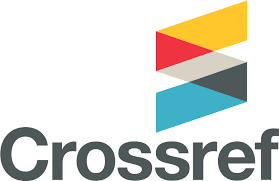THE ROLE OF INFORMATION TECHNOLOGY ON STRATEGIC HRM: TRANSFORMATION OF TRADITIONAL MINDSET
DOI:
https://doi.org/10.5937/bizinfo1901015HKeywords:
Information technology, HRIS, Strategic HRM, Organizations, StrategyAbstract
The academic community and organizations practicing proper human resource management has experienced the transformation of conventional human resource management into a more strategy oriented, knowledge based human resource management termed as strategic human resource management. At present, HRM is not merely a department but also an inevitable strategic partner of the organizations. Information played a key role in this journey of this transformation with the support of technology and termed as HRIS. The management and use of HRIS have enriched the collection, store, utilization and sharing of information resources. The paper highlights the contribution of HRIS towards SHRM and argues that its appropriate management can add the value to SHRM. In addition, the paper also points out a few limitations of HRIS and how the future workplaces might look like. The paper is expected to contribute to the existing literature through some new directional and contributive discussions.
Downloads
References
Abang, A., May, C. and Maw, K., 2009. Human resources practices and organizational performance incentives as moderator. Journal of Academic Research in Economics, 1(2), 33-41.
Belias, D. and Sklikas, D., 2013. Aspects of job design. International Journal of Human Resource Management and Research, 3(4), 85-94.
Boateng, A., 2007. The Role of Human Resource Information Systems (HRIS) in Strategic Human Resource Management (SHRM). Master thesis presented at Swedish School of Economics and Business Administration, August, 2007. Available at: <http://citeseerx.ist.psu.edu/viewdoc/download?doi=10.1.1.473.5116&rep=rep1&type=pdf> [Accessed 21 March, 2019].
businessdictionary.com. 2019. [online] Available at: <http://www.whatishumanresource.com/job-design.> [Accessed 22 March, 2019].
Casico, W. F., 2006. Managing human resource: Productivity, Quality of work life, Profits (7th Edt.). McGraw-Hill.
Dusmanescu, D. and Bradic-Martinovic, A. 2011. The role of information systems in human resources management. [pdf] Munich Personal RePEc Archive. Available at: <https://mpra.ub.uni-muenchen.de/35286/> [Accessed 14 March, 2019].
Haines, B. and Lafleur, G, 2008. Information technology usage and human resource roles and effectiveness. Human Resource Management, 47(3), 525-540.
Hosain, M. S., 2017. The impact of E-HRM on organizational performance: Evidence from selective services sectors of Bangladesh. International Journal of Human Resources Management. 6(3), 1-14.
Hosain, M. S., 2015. Adoption of proper HRM practices: A technique for retaining employees and increasing firm performance? Scholar Journal of Business and Social Science, 1(1), 1-14.
Hosain, M. S., 2014. The influence of financial and non-financial rewards; and employee empowerment on task motivation and firm performance of Bangladeshi front line employees: A critical approach. European Journal of Business and Management, 6(7), 156-168.
Hossain, M. M. and Islam, M. S. 2015. Emerging role of E-HRM to optimize human resources management functions: A study on service industry of Bangladesh. Bangladesh Research Publications Journals, 11 (3), 260-266.
Hosain, M. S. and Rahman, M. S., 2016. Green human resource management: A theoretical overview. IOSR Journal of Business and Management, 18 (6), 54-59.
Jahan, S., 2014. Human resources information system: A theoretical perspective. Journal of Human Resource and Sustainability Studies, 2, 33-39.
Karikari, A., Boateng, P. and Ocansey, E., 2005. The role of human resource information system in the process of manpower activities. Journal of Industrial and Business Management. 5, 424-431.
Kavanagh, M.J., Thite, M. and Johnson, R.D., 2009. The future of HRIS: emerging trends in HRM and IT. Human Resource Information Systems: Basics, Applications, and Future Directions, California: SAGE Publications Inc, pp.409-418.
Mayfield, M., Mayfield, J. and Lunce, S., 2003. Human resource information systems: A review & model development. American Society for Competitiveness, 11(1). 1-18.
Society of Human Resource Management (SHRM). 2008. SHRM Learning System: Module One Strategic Management. USA: Society for Human Resource Management.
Silva, M. S. A. and Lima, C. G. S., 2018. Management of Information Systems. In: The Role of Information Systems Human Resource Management. Intechopen, Available at: http://dx.doi.org/10.5772/intechopen.79294.
Tannenbaum, S., 1990. HRIS information: User group implications. Journal of Systems Management, 41(1), 27-36.
Tesi, D., 2010. Human resource information systems and the performance of the human resource function. PhD. Libera University, Rome, Italy.
Thite, M., Kavanagh, M. J. and Johnson, R. D., 2012. Evolution of human resource management & human resource information systems: The role of information technology. In Kavanagh, M.J., Thite, M. & Johnson, R. D (Eds.). Human Resource Information Systems: Basics, Applications & Directions. Thousand Oaks, CA: Sage. P.2-34
Downloads
Published
Issue
Section
License
Copyright (c) 2019 BizInfo (Blace) Journal of Economics, Management and Informatics

This work is licensed under a Creative Commons Attribution-NonCommercial 4.0 International License.
















